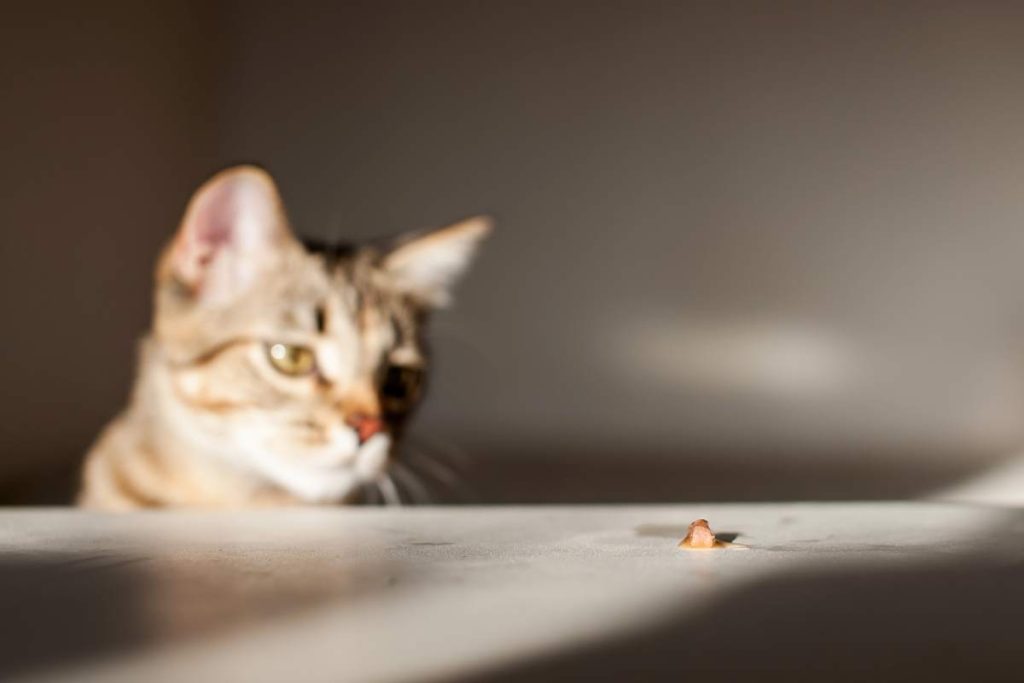When it comes to keeping your home pest-free, the safety of your pets is a top priority. Traditional pest control methods can be effective, but they often come with risks to the health and well-being of your furry friends.
Fortunately, there are pet-friendly pest control options available that allow you to protect your home from pests without compromising your pets’ safety.
In this article, we’ll guide you through the process of finding pet-friendly pest control services near you, ensuring that both your home and your pets remain safe and healthy.
Related article:
Is Pest Control Safe For My Cats and Dogs?
Pest control is quite important for keeping homes and yards free of insects, rodents, and other unwanted pests.
However, if you’re a pet owner, you might worry about whether pest control treatments could harm your cats and dogs. It’s a valid concern, as pets are part of the family, and their safety is a top priority.
The good news is that most modern pest control methods are designed to be safe for pets when used correctly. Still, it’s important to understand the potential risks and take necessary precautions.
Understanding Pest Control Methods
Pest control companies use a variety of methods to manage and eliminate pests. These can include chemical sprays, baits, traps, and natural or organic treatments.
The safety of your pets depends on the type of pest control method used and how it’s applied.
1. Chemical Sprays
These are the most common pest control methods. While they can be effective, they also pose the highest risk to pets if not used properly. Most pest control companies use products that are safe for pets once they’ve dried, but it’s crucial to follow instructions carefully.
Typically, you may need to keep pets away from treated areas for a few hours until the chemicals have dried and the space is ventilated.
2. Baits and Traps
These are generally safer because they target specific pests. However, if your pet accidentally ingests the bait or gets caught in a trap, it could be dangerous. Always place baits and traps in areas inaccessible to your pets.
3. Natural and Organic Treatments
These treatments use ingredients like essential oils or diatomaceous earth, which are generally safer for pets. However, “natural” doesn’t always mean “safe.” Some essential oils, for example, can be toxic to cats and dogs. It’s important to consult with your pest control provider and vet about which natural treatments are safe for your specific pets.

Steps to Ensure Pet Safety
To keep your pets safe during and after pest control treatments, follow these steps:
1. Inform Your Pest Control Company
Always let your pest control technician know that you have pets. They can take extra precautions or suggest alternative treatments that are safer for your animals.
2. Remove Pets During Treatment
If possible, take your pets out of the home while treatment is being applied. This is especially important for chemical sprays. If removing them isn’t possible, confine them to a room that won’t be treated, and make sure they have fresh water and proper ventilation.
3. Wait Before Letting Pets Back
After treatment, wait until the products have dried or settled before allowing your pets back into the treated areas. The waiting time can vary depending on the product used, so ask your technician for specific instructions.
4. Monitor Your Pets
After treatment, keep an eye on your pets for any signs of distress, such as vomiting, lethargy, or changes in behaviour. If you notice anything unusual, contact your vet immediately.
How Long Do I Have to Wait Before Re-Entry the House After Pest Control?
The amount of time you should wait before reentering your house after pest control depends on the type of treatment used. Here are some general guidelines:
1. Chemical Sprays:
- Wait Time: Typically, you should wait at least 2 to 4 hours after a chemical spray treatment before reentering your home. This allows time for the chemicals to dry and for the air to clear.
- Why: The chemicals can be harmful if inhaled or if they come into contact with skin before they’ve dried. Ventilation is also important, so open windows and doors if possible.
2. Fogging or Fumigation:
- Wait Time: For fogging or fumigation treatments, the wait time is generally longer, ranging from 24 to 72 hours.
- Why: These treatments involve more potent chemicals, which need ample time to dissipate. After the recommended time, you should ventilate your home thoroughly before re-entry.
3. Baits and Traps:
- Wait Time: No specific wait time is usually required for baits and traps since they are targeted methods that don’t typically release chemicals into the air.
- Why: However, it’s still a good idea to keep pets and children away from the areas where baits or traps are placed to prevent accidental contact or ingestion.
4. Natural or Organic Treatments:
- Wait Time: These treatments often require little to no wait time. However, a general rule of thumb is to wait at least 30 minutes to an hour, especially if essential oils or other strong-smelling substances are used.
- Why: Some natural treatments can still cause irritation if not properly ventilated, so it’s best to err on the side of caution.
Final Tips:
- Always Follow Specific Instructions: Your pest control technician will provide guidance based on the specific products used, so be sure to follow their advice.
- Ventilate Your Home: Regardless of the treatment type, it’s always a good idea to ventilate your home by opening windows and doors after the recommended wait time to ensure any lingering chemicals are dispersed.
- Check for Sensitive Members: If anyone in your household has allergies, asthma, or other respiratory conditions, you may want to extend the wait time and ensure the home is well-ventilated before reentry.

How to Find Pet-Friendly Pest Control Near Me
Finding pet-friendly pest control near you is crucial if you want to keep your home free from pests while ensuring the safety of your furry friends. Pets are curious by nature, and the last thing you want is for them to come into contact with harmful chemicals.
Fortunately, many pest control companies offer pet-friendly services that effectively eliminate pests without putting your pets at risk.
Here’s how you can find the right service in your area.
1. Start with Research
Begin by doing some research online. Use search engines to look for pest control companies in your area and check their websites for information about pet-friendly services. Keywords like “pet-friendly pest control” or “Pet-Friendly Pest Control Near Me” can help you identify companies that prioritize animal safety.
Look for companies that explicitly mention using non-toxic, eco-friendly, or organic products, as these are often safer for pets.
2. Check Reviews and Testimonials
Once you have a list of potential companies, check online reviews and testimonials from other pet owners. Websites like Yelp, Google Reviews, and even social media platforms can provide insights into how well these companies perform and how safe their methods are for pets.
Pay attention to feedback specifically mentioning pet safety to get a sense of which companies truly deliver on their promises.
3. Ask for Recommendations
Word-of-mouth recommendations can be incredibly valuable. Ask friends, family, or neighbours who have pets if they can recommend a pet-friendly pest control service. Veterinarians and local pet stores may also have suggestions, as they often have experience with or hear about services that cater to pet owners.
4. Contact the Companies Directly
Once you’ve narrowed down your options, contact the pest control companies directly. Ask them specific questions about the products and methods they use and whether they offer pet-friendly options. Some important questions to ask include:
- What types of chemicals or treatments do you use?
- Are these treatments safe for pets?
- Do you offer organic or natural pest control options?
- How long should pets stay away from treated areas?
- Do you take special precautions when treating homes with pets?
A reputable company will be transparent about its practices and willing to explain how they ensure pet safety.
5. Look for Certifications
Some pest control companies have certifications or affiliations that indicate their commitment to safe and environmentally friendly practices. Look for certifications from organizations like Certificate III in Rural and Environmental Pest Management or Certificate III in Urban Pest Management, which can give you peace of mind that the company follows industry standards for pet-friendly pest control.
6. Schedule a Consultation
Before committing to a service, consider scheduling a consultation. This allows the pest control company to assess your home’s needs and recommend the safest and most effective treatments. During the consultation, make sure to reiterate that pet safety is your top priority. This is also an opportunity to observe how the company handles your concerns and whether they’re knowledgeable about pet-safe practices.
7. Compare Costs and Services
While cost shouldn’t be the only factor, it’s important to compare prices and services between different companies. Some companies may charge a premium for pet-friendly services, but this is often worth the investment to ensure your pets are safe. Make sure to understand what’s included in the service, such as follow-up visits or guarantees.
If you don’t want to roll the dice and want only peace of mind, contact PestControlBrisbane.com today! They’ll prioritise your pets’ well-being in creating a pest-free environment that they can safely call home.









